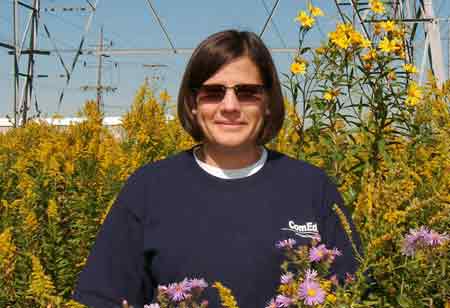

Thank you for Subscribing to Environmental Business Review Weekly Brief

At ComEd, an electric utility servicing over four million people across northern Illinois, complying with environmental regulations has long been the bare minimum. As an environmental leader with over 20 years of experience in the utility and non-profit environmental spaces, I have witnessed an exciting evolution of environmental compliance. As our company culture has increasingly valued and embraced sustainability, the need to evolve and continually improve environmental performance is always top of mind. In recent years, innovative technologies have allowed us to challenge the status quo across several of our many environmental programs.
AI Elevates Recycling Performance One such example is our waste and recycling program. With hundreds of ComEd-operated dumpsters in use across our service territory, recycling performance has always had room to improve at ComEd. Most dumpsters are serviced on a one-size fits all schedule and experience issues with commingling of recyclables and trash. In 2021, we installed dumpster cameras to tackle these issues through technology and artificial intelligence. 160 cameras were mounted in the corners of select dumpsters. The cameras take still photos three times a day of the inside of the dumpsters, which are transmitted to a Cloud-based platform and interpreted through AI. This allowed our Environmental professionals to determine appropriate service levels and eliminate unnecessary truck rolls, thereby reducing CO2 emissions. Further, we have identified opportunities to reduce contamination, minimize waste and increase recycling by proactively identifying commingling. To date, the program has reduced service of front load dumpsters by over 50 percent. "We've embraced innovative technologies to refine our recycling practices, harnessed data to reduce carbon emissions from our fleet, and found unique uses for drones to minimize impact on birds." Telematics Transforms Vehicle Emissions We have experienced equally strong results in another key program, greenhouse gas emissions management, through idling reduction technology. In coordination with an Exelon-wide climate initiative, ComEd has set a goal to reduce its operations-driven emissions 50 percent by 2030. To work towards this goal, our first step was to reduce non-essential, company vehicle idling by 50 percent at ComEd facilities where field employees are based. To monitor idling, we utilize vehicle telematics technology, installed in our entire company fleet, which provides real time data to our Fleet and Environmental Departments. The Environmental Department then utilizes custom dashboards to manage an ongoing, targeted communication campaign. Our year-end data predicts that we will meet our 50 percent idling reduction goal, which equates to avoiding nearly 1,280 MtCO2e of emissions. Innovation Protects Avian Species Lastly, we have found remarkable success utilizing drone technology to provide creative solutions for avian protection and management. As an electric utility, we recognize that our power lines pose a danger to avian species, and as such, we seek to continuously minimize the risk of avian interactions, often through use of bird diverters. Diverters are designed to increase visibility of overhead lines and are estimated to reduce the incidence of bird collisions and associated deaths from 70 percent to 90 percent. Several years ago, we conducted a risk assessment on distribution assets in high-risk waterway crossings prone to bird collisions. Findings showed a small, but significant, percentage of distribution lines were installed in migratory paths of birds along water crossings. These over-water or marshy crossings are difficult to reach over without rental of barges or use of matting, which pose increased costs and safety risks to employees. To address this challenge, several departments partnered and decided to pilot the use of drones to place bird diverters over water ways. ComEd’s Drone Team then modified the Matrice 600 drone to achieve greater resilience to electromagnetic interference near high voltage conductors. Since the beginning of this initiative, approximately 2,000 diverters have been installed in 176 high-risk locations using drone technology. This is only one aspect of our avian protection and management program. Through my many years in this industry, I am grateful to have witnessed a transformation in ComEd’s approach to environmental management. We've embraced innovative technologies to refine our recycling practices, harnessed data to reduce carbon emissions from our fleet, and found unique uses for drones to minimize impact on birds. As I continue to witness these initiatives and others in action, it is clear that technology will have a growing role in how we manage and improve our environmental performance in the utility industry. These efforts, led by our Environmental team and supported by countless groups across the organization, not only make me proud to work for ComEd but also inspire hope for more sustainable future.